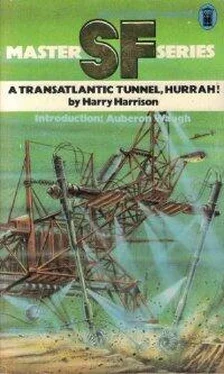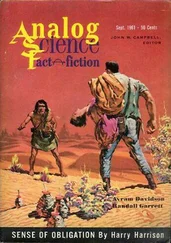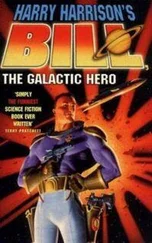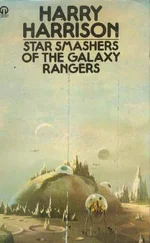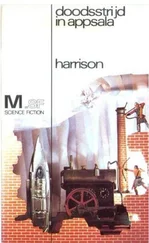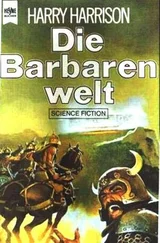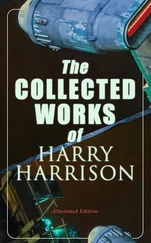Harry Harrison - A Transatlantic Tunnel, Hurrah!
Здесь есть возможность читать онлайн «Harry Harrison - A Transatlantic Tunnel, Hurrah!» весь текст электронной книги совершенно бесплатно (целиком полную версию без сокращений). В некоторых случаях можно слушать аудио, скачать через торрент в формате fb2 и присутствует краткое содержание. Год выпуска: 1972, ISBN: 1972, Издательство: Faber and Faber, Жанр: Исторический детектив, на английском языке. Описание произведения, (предисловие) а так же отзывы посетителей доступны на портале библиотеки ЛибКат.
- Название:A Transatlantic Tunnel, Hurrah!
- Автор:
- Издательство:Faber and Faber
- Жанр:
- Год:1972
- ISBN:0-571-09996-3
- Рейтинг книги:5 / 5. Голосов: 1
-
Избранное:Добавить в избранное
- Отзывы:
-
Ваша оценка:
- 100
- 1
- 2
- 3
- 4
- 5
A Transatlantic Tunnel, Hurrah!: краткое содержание, описание и аннотация
Предлагаем к чтению аннотацию, описание, краткое содержание или предисловие (зависит от того, что написал сам автор книги «A Transatlantic Tunnel, Hurrah!»). Если вы не нашли необходимую информацию о книге — напишите в комментариях, мы постараемся отыскать её.
.
Captain Augustine Washington and his team of navvies are driving a tunnel under the Atlantic in a heroic feat of construction. For Gus, a descendant of the infamous George Washington, executed as a traitor after the Battle of Lexington, this is a chance to redeem the family name.
A Transatlantic Tunnel, Hurrah! — читать онлайн бесплатно полную книгу (весь текст) целиком
Ниже представлен текст книги, разбитый по страницам. Система сохранения места последней прочитанной страницы, позволяет с удобством читать онлайн бесплатно книгу «A Transatlantic Tunnel, Hurrah!», без необходимости каждый раз заново искать на чём Вы остановились. Поставьте закладку, и сможете в любой момент перейти на страницу, на которой закончили чтение.
Интервал:
Закладка:
“Gentlemen, you all realize that the longest and most arduous portion of our labor now lies before us. Sir Isambard has proposed a radical form of transportation in these sections of our tunnel and research has proven that his genius was correct. The evacuated linear electric line will add a new dimension to transportation in the future.”
“Forgive my interruption,” said Cornwallis, “but I’m not quite sure that I understand the operation of this thing and I would be deeply grateful if you could explain it in some manner that would enable me to grasp it. Though I can wend my way through the intricacies of international finance I must admit that my head grows thick at the mention of electrons and allied objects.”
“Nonsense, Charles, I’ve told you a dozen times how the blasted thing works,” Sir Isambard broke in, quite warmly. “Let’s get on with the affairs at hand.”
“Please, an explanation first, if you don’t mind,” said Sir Winthrop, with some gratitude. “I am happy to see I am not alone in my ignorance, which was causing me some concern. If you would, Washington.”
Sir Isambard subsided, grumbling at this outrageous waste of time, draining a reckless draft of his spring water, so annoyed was he. Gus took this as assent and explained.
“The theories behind the proposals are quite complex, but there is no need to go into that since the results can be simply understood. Think of the tunnel, if you will, as an immense length of pipe, solid and integral. There is air in this pipe at the same pressure as most air upon the surface of this world, that is in the neighborhood of some fifteen pounds to the square inch. This air serves only one function, that of permitting the passengers in the trains to breathe, an important fact to the passengers but of no importance to the engineering of the tunnel. These few pounds of pressure add nothing to the structural strength of the tunnel walls to keep out the immense pressures of the ocean above, and from the engineering point of view the air is, in fact, a handicap because it limits and retards the speed of the trains. Remove the air, an easy thing to do, and the trains would go faster while using less power.”
“But the people, sir, our passengers, they must breathe!”
“And breathe they will-for the trains will be sealed and pressurized just like high-altitude aircraft. With the air removed we can now consider higher speeds than were ever possible before. Why there is no reason why our trains cannot go eight, nine hundred—even a thousand miles an hour.”
“Wheels and bearings will not sustain such speeds.”
“Perfectly correct, Sir Winthrop, which leads us to the next stage. A train with no wheels. This train will literally float in the air as powerful magnets in the train are repelled by equally powerful magnets in the track. We have all seen how one magnet will support another in midair upon its repelling field, and thusly will our train ride in its evacuated tunnel. But what will move our train? And here is the genius of Sir Isambard’s answer.
“The train will move by means of a linear traction engine. I shall not explain this complex invention, but suffice to say it is like an electric motor turned inside out with one part of the motor aboard the train and the other stretched on the roadbed the length of the tunnel with no physical connection needed, or wanted, between them. In addition, most of the train’s speed will be derived by its dropping off the edge of the continental shelf and falling the three miles down to the abyssal plain on the ocean’s bottom. And there you have it, gentlemen, a sealed train in an evacuated tube, floating in mid tunnel and touching nothing physical, even molecules of air, being started on its way by gravity and continuing by electricity. A form of transportation as modern as the entire concept of the tunnel itself.”
There were sighs of relief from the financiers and a few questions to clear up certain points so that when Gus continued he had the informed and knowledgeable attention of his small audience.
“As has been demonstrated we now have our means of transportation and the preforming technique to lay the tunnel. The final step, before detailed surveying and construction begins, is the selection of the route to be followed. Because of the complex nature of the ocean’s floor, great care must be taken at this point, for the bottom of the Atlantic is no sandy lagoon that may be slashed directly across. Hardly! What we have here is a varied landscape more complex and drastic than the one we know on the drier surfaces of our globe. There are, of course, the abyssal plains that form the bottom, lying at an average depth of sixteen thousand feet below the ocean’s surface, but other features must be taken into consideration.
“Down the center of the ocean runs the Mid-Atlantic Ridge, a great mountain chain that is in reality a double row of mountains with the gorge of the Rift Valley between them. These mountain ranges and the Rift Valley are crossed at right angles by immense canyons called fracture zones that resemble wrinkles in the Earth’s hide. Other features also concern us, the Mid-Ocean Canyon, like an underwater riverbed on the ocean’s floor, seamounts and islands and trenches—that is, extraordinarily deep gulfs—such as this one, on the map here, that is over five miles in depth.
“And there are more factors to consider, underwater earthquakes and vulcanism which are concentrated in specific areas for the most part, the very high temperatures of the sea bottom near the Rift Valley as well as the fact that the sea bottom here is moving as the continents drift apart at the rate of about two inches a year. It appears, and the geologists confirm the suspicion, that hew matter rises from the Earth’s interior in the Rift Valley and spreads outwards at that steady rate. All problems, gentlemen, but none of them problems that cannot be surmounted.
“You will note the proposed route on this map which avoids these enumerated obstacles. If we begin here at Point 200 on the edge of the Continental Shelf, our tunnel proceeds roughly north northwest along the fracture zone we call 41-G that join the end of the Mid-Atlantic Ridge and the offset Reykjanes Ridge south of Iceland. By doing this we avoid the peril of crossing the Rift Valley which ceases to exist at this point. Now, further west, we emerge from the fracture zone and turn south, skirting the Mid-Ocean Canyon and swinging around the heights of the Milne Seamount until we reach the Sohm Abyssal Plain. At this point the tunnel will turn almost due north to rise up the Laurentian Cone to meet the tunnel already laid on the Continental Shelf at the Grand Banks Station. Now this route might be said to have a few faults.”
There was a rumble like a distant storm from Sir Isambard’s direction that Gus chose to ignore as he continued.
“Since the ocean bed is so warm in the fracture zone special tunnel sections will be laid on the bed itself, not in a trench, and constructed in such a manner that water will circulate through cavities in them to keep them cool. However the major criticism might be that, in order to avoid all the geological details, the tunnel will be twice as long as it would be if it went in a direct manner, therefore twice as costly.”
“Good God, man,” Sir Isambard exploded. “We have been over this before and you know we can’t go directly across the infernal ocean. So what are you suggesting?”
There was a hushed silence as Gus took a sheet of paper from his pocket and unfolded it, gulls could be heard crying outside and the strains of the orchestra playing in the distance, but all was listening quiet on the balcony.
“That is just what I am suggesting,” said Gus, with a positive sure-ness. “And I intend to show you how. I propose that the tunnel go due south from Point 200, over the flat bed of the Biscay Abyssal Plain to a base in the archipelago of the Azores, where it will meet the other leg of the tunnel that has come almost due east from the Grand Banks along the Oceanographer Fracture Zone. This route is less than half the length of the one under consideration now and, in addition, will provide an unexpected benefit. Cargo can be unloaded in the Azores base to be loaded on ships for Africa and the Continent, thereby shortening the voyage greatly. Plus the fact that another leg of the tunnel can eventually be considered from the Azores to Spain that will make a train connection between the Continent and the Americas. If this is done the results will be simply amazing.
Читать дальшеИнтервал:
Закладка:
Похожие книги на «A Transatlantic Tunnel, Hurrah!»
Представляем Вашему вниманию похожие книги на «A Transatlantic Tunnel, Hurrah!» списком для выбора. Мы отобрали схожую по названию и смыслу литературу в надежде предоставить читателям больше вариантов отыскать новые, интересные, ещё непрочитанные произведения.
Обсуждение, отзывы о книге «A Transatlantic Tunnel, Hurrah!» и просто собственные мнения читателей. Оставьте ваши комментарии, напишите, что Вы думаете о произведении, его смысле или главных героях. Укажите что конкретно понравилось, а что нет, и почему Вы так считаете.
